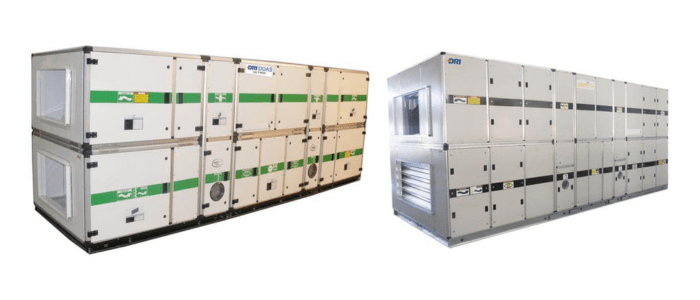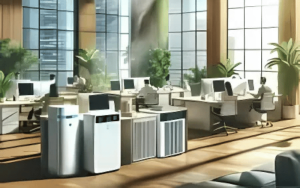Various approaches have been undertaken to conserve energy and enhance indoor comfort. Initially, the concept was to seal buildings, minimizing the infiltration and ventilation of air, thereby retaining the warm or cold air inside and reducing energy use.
Unfortunately, this method quickly showed flaws as the building occupants started to experience symptoms like dry coughs, headaches, and nasal irritations. The culprit has been the contamination within the air conditioning system.
Research has consistently highlighted the correlation between indoor air quality and human health after this revelation. As a result, the approach shifted from sealing buildings to sourcing solutions from external air i.e. Dedicated Outdoor Air Systems.
So, What Exactly is a Dedicated Outdoor Air System (DOAS)?
Judging by its name, one could assume the system is designed for outdoor use. However, having a system intended to enhance outdoor air quality wouldn’t make sense. Thus, it’s a system built outdoors to modify indoor air quality.
In essence, DOAS is an outdoor HVAC system, typically complementing other HVAC equipment. It acts as an air filter for the HVAC system, filtering the outdoor air before introducing it inside the building. As such, DOAS can eliminate outdoor air contaminants and minimize indoor air pollution.
Usually, HVAC systems must process a considerable amount of outdoor air to provide warm or cold air indoors. The high humidity of outdoor air can lower the efficiency of the HVAC. DOAS addresses this by dehumidifying outdoor air and reducing energy consumption during ventilation.
Hence, when used alongside an indoor HVAC system, a DOAS can significantly improve indoor air quality, decrease energy usage, and avoid moisture-related issues within the HVAC system.
Indoor Air Quality Begins with Proper Ventilation
CO2 management in occupied spaces is at the heart of most ventilation requirements. As people breathe out CO2, high concentrations of this gas can accumulate in heavily populated areas, potentially reaching levels as high as 2000 to 5000 ppm, compared to the outdoor average of 400 ppm. Adequate ventilation is crucial to maintaining low CO2 levels and indoor air quality.
The Power of Decoupling with DOAS
DOAS offers several benefits over central station ventilation, making it a preferred choice for many designers. These benefits include enhanced ventilation quality, decoupled energy efficiency, and better control over temperature and humidity. Traditional central air handlers and rooftop units generally mix, condition, and supply outdoor and recirculate return air to space through a single piece of equipment, with outdoor air making up a small fraction of the supplied air.
The primary issue with these systems is the need for more ability to measure or control where the outdoor air ends up. Using a DOAS unit to decouple the ventilation air from the central recirculated air ensures evenly distributed fresh air across the building.
Moreover, the decoupling process allows controlled delivery of ventilation air to only occupied areas of a facility, promoting energy savings in low- or mixed-occupancy spaces. Such precise control is unachievable with centrally distributed ventilation systems.
Furthermore, the conditioning and supply of ventilation air is typically the most energy-intensive part of HVAC systems. Extreme temperature and latent loads can overpower traditional central stations or small terminal conditioning equipment, causing temperature control issues and excessive humidity.
DOAS is specifically designed to manage the extremes of processing ventilation air efficiently. By decoupling the ventilation air from the recirculated system, facility managers can independently control space humidity and temperature using DOAS for primary dehumidification and recirculating equipment for temperature control. This method promotes thermal comfort and ensures fresh air delivery to occupied spaces.
Packaging Efficiency
DOAS achieves the abovementioned benefits by leveraging cutting-edge refrigeration, control, and energy-recovery technologies. Most DOAS units are packaged direct expansion (DX) systems incorporating efficient variable-speed or multi-stage compressors for precise temperature and humidity control. This broad range of compressor capacity modulation is crucial to maintaining optimal comfort while minimizing energy usage. Coupling variable-speed DX technology with energy recovery solutions, like enthalpy wheels, plate heat exchangers, and hot gas and liquid sub-cool reheat systems, allows for high efficiency even under challenging conditions.
As the focus on ventilation and air quality continues to grow among facility managers and building owners, a trend expected to intensify, DOAS systems are increasingly recognized as a viable choice to promote energy-efficient healthy buildings. Get in touch with DRI Rotors to keep your facilities more relaxed and comfortable than others.






